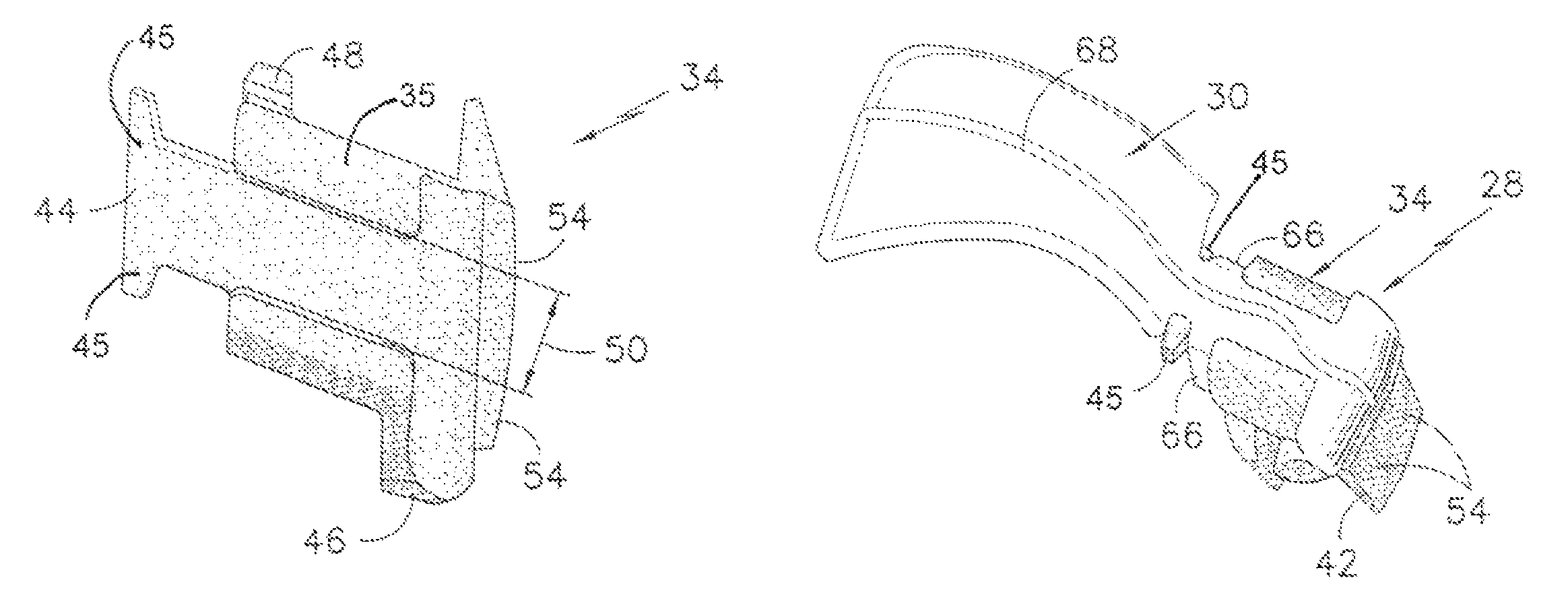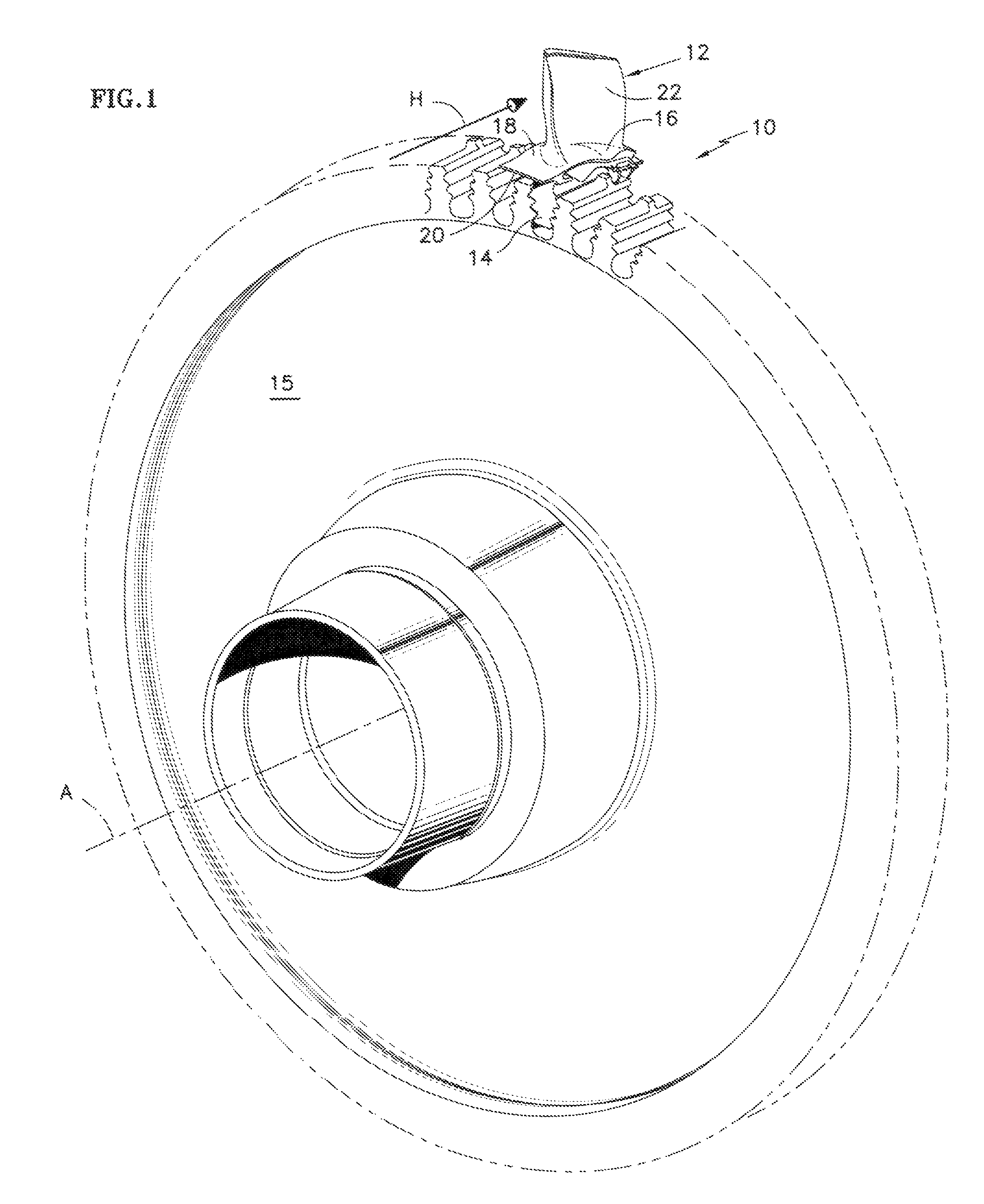Turbine blade nested seal and damper assembly
a technology of damper assembly and turbine blade, which is applied in the direction of liquid fuel engines, vessel construction, marine propulsion, etc., to achieve the effects of less complicated and stronger, less expensive, and convenient manufacturing
- Summary
- Abstract
- Description
- Claims
- Application Information
AI Technical Summary
Benefits of technology
Problems solved by technology
Method used
Image
Examples
Embodiment Construction
[0022]Referring to FIG. 1, a turbine rotor assembly 10 includes a plurality of adjacent turbine blades 12 (one shown) mounted to a turbine rotor disk 15 about an engine axis A. Each of the turbine blades 12 includes a root 14 that is fit into a corresponding slot of the turbine rotor disk 15. Radially outward of the root 14 is a platform 16. The platform 16 defines an outer platform surface 18 and an inner platform surface 20. The inner surface 20 is disposed radially inward of the outer surface 18. An airfoil 22 extends outward from the platform 16.
[0023]Referring to FIG. 2, hot gas H flows around the airfoil 22 and over the outer platform surface 18 while relatively cooler high pressure air (C) pressurizes the cavity under the platform 16. A gap 26 extends axially between adjacent turbine blades 12 (FIG. 3). The gap 26 prevents contact and allows for thermal growth between adjacent turbine blades 12. A damper-seal assembly 28 includes a seal 30 and a damper 34 to prevent hot gases...
PUM
 Login to View More
Login to View More Abstract
Description
Claims
Application Information
 Login to View More
Login to View More - R&D
- Intellectual Property
- Life Sciences
- Materials
- Tech Scout
- Unparalleled Data Quality
- Higher Quality Content
- 60% Fewer Hallucinations
Browse by: Latest US Patents, China's latest patents, Technical Efficacy Thesaurus, Application Domain, Technology Topic, Popular Technical Reports.
© 2025 PatSnap. All rights reserved.Legal|Privacy policy|Modern Slavery Act Transparency Statement|Sitemap|About US| Contact US: help@patsnap.com



